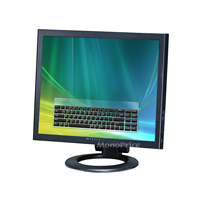The Science Behind Touch Screen Monitors

These days, capacitive screens represent the most common parts in a series of gadgets, including smartphones or monitors. If mobile manufacturers did not come up with this trend, most people would still rely on stylus pens in order to operate touch screens. However, the respective technology is still relatively new in monitors. In fact, it might seem a little awkward to control a laptop or desktop touch screen monitor with your fingers. It will probably take a while to get used to it, but there are no doubts that such changes are about to occur anytime soon. But how does this technology actually work?
How touch screen monitors understand your signals
When you touch the respective screen with your finger, you obviously expose the screen to an electrical shock. The shock is taken over by the interface of a sensor, then analyzed for a precise positioning. When the position is accurate, the interface converts data into X/Y coordinates, which are then transmitted to the actual computer.
The interesting part is that sophisticated interfaces have the capacity to filter parasite signals. They are set up to interact with human parts only, so accidental interference with other objects or particles are successfully prevented.
What sensors are made of
There are a lot of sensors building a touch screen monitor and each of them has its own role. At the same time, these units consist of more pieces or layers:
- 2 conductive layers
- Glass support
- Electrode
- Protective transparent layer
The two conductive layers are separated by the glass support. On the other hand, the protective transparent layer provides an increased accuracy for each touch. It also has a remarkable durability, especially against mild scratches, abrasive chemical substances or liquids.
Understanding resistive technology
Compared to the capacitive technology, the resistive one relies on two electrically conductive surfaces. They are transparent and very close one to another. They are practically separated by a fine and thin layer of insulation. When the user touches the screen, the two surfaces get in touch and the interface takes over the X/Y coordinates, only to send them to the actual computer.
Resistive sensors have the primary advantage to be operated with stylus pens, gloved hands or other similar things. They are also a lot cheaper than other similar sensors, not to mention about the inexpensive production. They represent a primary option for equipment manufacturers, as they are also a lot easier to design. Therefore, they are widely implemented into everyday or industrial uses.
At the same time, resistive sensors have the power to resist against dust, liquids and other impurities, not to mention about providing the user with feedback through the touch resistance. Capacitive sensors do not imply pushing though, so it is hard to tell when they actually stop working.
In conclusion, the touch screen technology is extremely simple for someone who is familiar with the computer world. Fortunately, everyday users can understand how such things work too, only to know how to take care of them and maintain them appropriately.


 Prateek
Prateek








